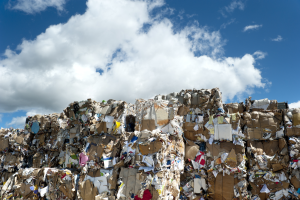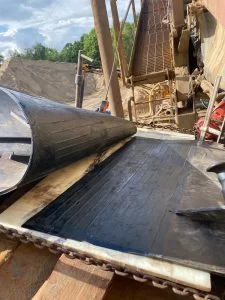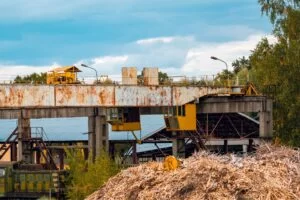A research paper has reported that termites could be a key aid in helping to produce biofuel more efficiently.
9, a:1:{i:0;s:8:”defaults”;}, Study Suggests Termites Could Help Create Biofuel, A research paper has reported that termites could be a key aid in helping to produce biofuel more efficiently., A research paper has reported that termites could be a key aid in helping to produce biofuel more efficiently.
The paper, published in ACS Sustainable Chemistry & Engineering, has highlighted that microbes found in the guts of some species of termites can help to break down straw, which allows it to be refined into biofuels and other related chemicals easier.
Straw, the dried leftover stalks after a grain harvest, have long been seen as a great candidate for refining into biofuels, as it allows farmers who are already harvesting and growing grain to use every part of the plant.
However, dried plants have three main complex polymers which are wrapped together which need to be broken down before they can be turned into fuel.
The first two, cellulose and hemicelluloses, are found in plant cell walls can both be broken down into sugars which are then fermented and turned into biofuel. However, lignin is much tougher and needs to be broken down before the rest of the material can be refined.
The reason for this is that lignin is a vital part of a plant’s structure, and without it, the plant simply could not hold itself up.
Currently, lignin, which can also be turned into several industrial materials, is broken down using fungi enzymes. However, these are harder to produce and more expensive than bacterial enzymes, which develop in the digestive system of many animals, and are more effective in degrading lignin.
Termites, who eat wood for food primarily, are great candidates for creating lignin destroying material, so if their bacteria could be used in a biofuel refining process it would allow for biofuel to be more efficiently produced.
The experiment used 500 guts from four different termite species and added them to bioreactors as well as wheat straw to see how well the straw is broken down using this digestive bacteria.
The gut microbes successfully broke down up to 37 per cent of the lignin, however, they were more effective at breaking down cellulose (41 per cent) and hemicelluloses (51 per cent), which may suggest a connection between the processes.
By effectively breaking down the hemicelluloses and cellulose, the team have theories that this process also helped break down the lignin, and will be exploring exactly why this is in further studies.
Breaking down lignin cheaply has been a huge obstacle in the way of more widespread use of straw and other plant material for biofuel, as the lignin stops the fermentation of sugars brought about by the cellulose and hemicelluloses breaking down.
This particular study was made to confirm an early demonstration by the paper’s lead writer, Guillermina Hernandez-Raquet, that termite microbes could break down lignin in a bioreactor and wished to look closer at the process.
If the process can become more efficient, it lowers the cost of biofuel relative to fossil fuels, encouraging industries such as sea freight and aerospace to adopt more sustainable fuels.
For more information about conveyor belt cleaners used as part of biofuel refining, get in touch today., field_544dcaa8220f0, , field_543e9601d7f94




